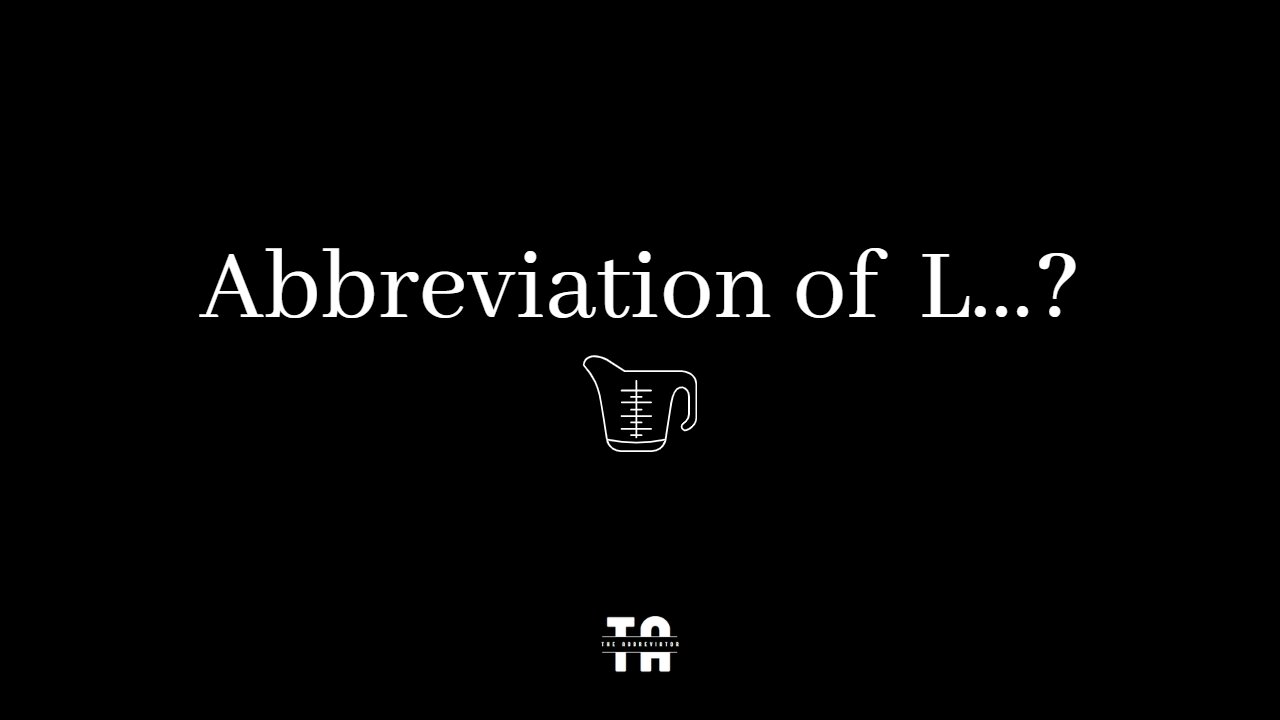Premium Only Content

Abbreviation of L? | Unit of Measurements.
Abbreviation of L. (Liter)
" L." is a shortened version of the word " Liter,". The liter is a metric unit of volume commonly used to measure liquid capacity. It is part of the International System of Units (SI) and is widely adopted around the world. The liter is equal to one cubic decimeter (1 L = 1 dm³) or 1000 cubic centimeters (1 L = 1000 cm³).
The term "liter" is derived from the French word "litre," which was introduced by the French government in 1795 as part of the metric system. It was originally intended to be a unit of volume equal to the volume of one kilogram of water at its maximum density.
The liter is a convenient unit for measuring the volume of liquids such as water, milk, gasoline, and other beverages or substances. It is used in everyday life for various purposes, including in cooking, manufacturing, scientific research, and commercial transactions.
The liter is based on the decimal system, which makes conversions between different metric units of volume straightforward. For example, 1 liter is equal to 1000 milliliters (mL) or 0.001 cubic meters (m³). It is also equivalent to approximately 33.814 fluid ounces in the United States customary system of measurement.
It's worth noting that the liter is a unit of volume, not weight. The weight of a substance in liters can vary depending on its density. For example, a liter of water will weigh approximately 1 kilogram, but a liter of a denser substance like oil or mercury will weigh more.
In some countries, the liter is sometimes referred to as a "litre" with an additional "re" at the end, especially in British English. However, the abbreviation "L" remains the same regardless of the spelling.
To give you an idea of the volume represented by a liter, it is roughly equivalent to a cube with sides measuring about 10 centimeters (or 4 inches) in length. It is also comparable to the volume of a standard water bottle.
The liter is widely adopted as a unit of measurement around the world, particularly in countries that have adopted the metric system. It is used in various industries, including scientific research, engineering, medicine, and commerce.
The liter is a useful unit for conversions between different metric units of volume. For example, 1 liter is equal to 1000 milliliters, 0.001 kiloliters, or 0.001 cubic meters. In many countries, fuel efficiency for vehicles is measured in liters per 100 kilometers (L/100 km). This measurement represents the number of liters of fuel consumed for every 100 kilometers traveled.
Music: https://www.chosic.com/free-music/all/
-
 LIVE
LIVE
Right Side Broadcasting Network
3 hours agoLIVE: White House Press Secretary Karoline Leavitt Holds Press Briefing - 3/11/25
6,124 watching -
 LIVE
LIVE
The Quartering
1 hour agoTrump Goes NUCLEAR On Canada, Blasts Massie, Harry Potter Race Swap, Man Humiliated On TV Show
3,599 watching -
 LIVE
LIVE
The White House
1 hour agoPress Secretary Karoline Leavitt Briefs Members of the Media, Mar. 11, 2025
1,583 watching -
 LIVE
LIVE
Winston Marshall
34 minutes agoEXCLUSIVE : Oliver Anthony On Life After ‘Rich Men’, The Christian Counter Culture and The Elites
321 watching -
 LIVE
LIVE
Russell Brand
1 hour agoDigital Censorship & Political Warfare: X Attacked, Rand Paul Rebels, Free Speech on Trial – SF551
7,164 watching -
 LIVE
LIVE
Simply Bitcoin
1 hour agoTrumps Bitcoin Embrace TERRIFIES The EU | EP 1200
298 watching -
 LIVE
LIVE
The Charlie Kirk Show
1 hour agoThe Left Regroups + Deporting Hamas Lovers + Love Is Blind? | Rep. Donalds, Dr. Arnn | 3.11.25
6,372 watching -
 30:41
30:41
BonginoReport
20 hours agoTrump Pulls Ultimate Uno Reverse Card On Illegals (Ep.1) - 03/10/2025
87.1K483 -
 34:53
34:53
Grant Stinchfield
19 hours agoDoctored Photos and Phony Stats, How The Media is Weaponizing the Measles... Again!
1.68K1 -
 LIVE
LIVE
TheAlecLaceShow
2 hours agoGuests: Senator Bernie Moreno & Anne Fundner | Trump Calls For Massie Primary | The Alec Lace Show
127 watching